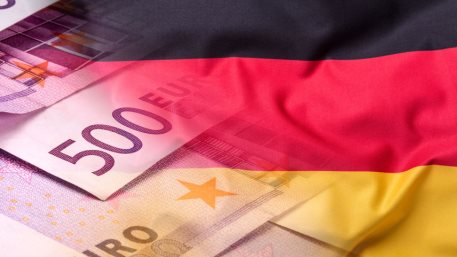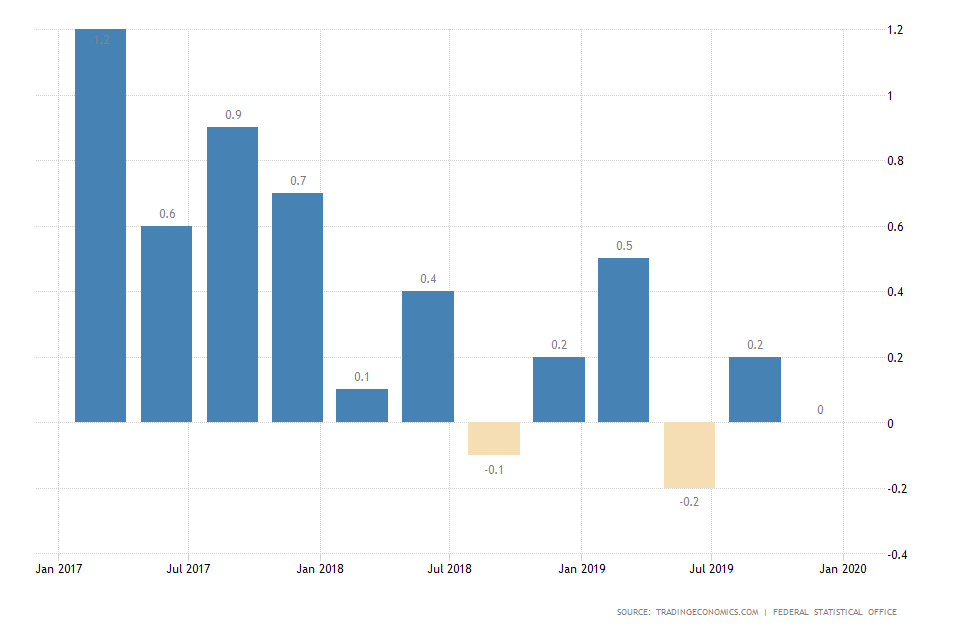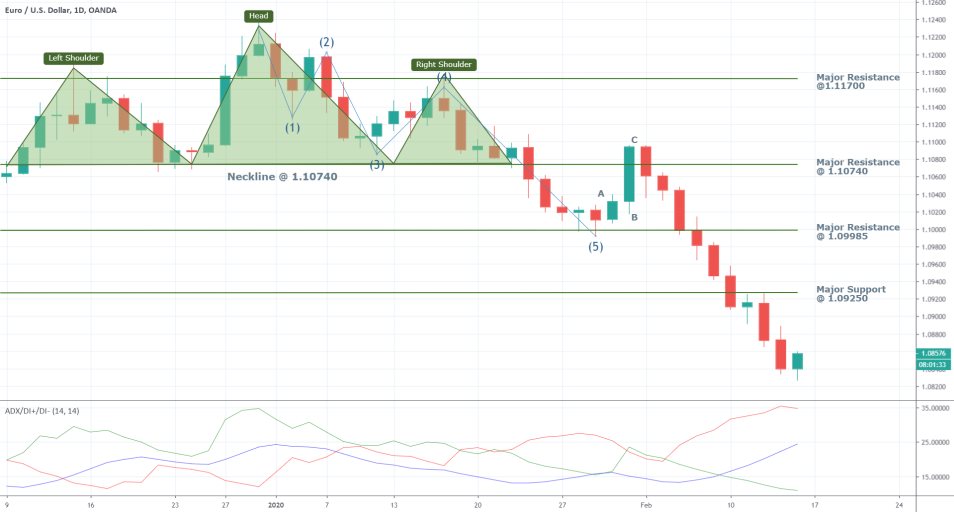
Destatis in Germany released its newest economic report, covering the recorded growth in the country’s Gross Domestic Product over the last fiscal quarter of last year, and the results were surprisingly negative.
The consensus forecasts projected 0.1 per cent growth to be observed for the fiscal quarter ending December 31st 2019 after the moderate gains which were observed for the previous quarter.
However, it was later demonstrated that the German economy actually contracted by a percentage point and therefore its growth rate remained flat at 0 per cent.

In light of these recent results, it can be observed that the long-term trend of growth consolidation around the zero per cent level was preserved during the last quarter.
This trend was initiated towards the end of 2017 and had since become a major impediment to investors' confidence in Germany and the Eurozone as a whole.
One of the core reasons leading to such poor results was the uncertainty that was looming over the international trade conditions at the time, stemming from the US/China trade war.
Germany is one of those countries whose economic well-being is especially dependent on uncurbed global supply and free trade; both of these factors were jeopardised at the high of the trade war and resulted in subdued growth in Germany.
The situation could have been much worse if it weren't for ECB's accommodative monetary policy in the Eurozone and the extra liquidity, which is made easily accessible to support growth in the bloc.
Nevertheless, the long-term trend of subdued economic growth may be proven to be tough to break, and loose monetary policy may turn out to be insufficient in promoting more robust aggregate growth in demand.
As Christine Lagarde, the President of the ECB argued recently in the European Parliament, governments in the Eurozone may have to increase their spending in order to promote and indeed support faster growth.
The German economy has a considerable budget surplus of 1.5 per cent, which can be used instead to bolster government spending, something that Lagarde claims would be an exceptionally effective policy in the current environment of low interest rates.
Meanwhile, the euro continues to lose ground to all major currencies, including the greenback.
The price action on the EURUSD is currently underpinned by a considerable bearish downtrend, which is likely to persist as indicated by the ADX index, which illustrates the rising strength of the downswing.

Trendsharks Premium
Gold is undergoing a correction, as investors take profits to offset losses from falling stock prices, impacting their margins. However, we anticipate a renewed wave of [...]
The Swiss stock market index is mirroring its global counterparts, such as Germany 40 and US100, experiencing a sharp decline following the announcement of new [...]
We’re analyzing the weekly chart to grasp the broader market trend. Over the past three years, the US30 index has surged by 17,000 points, often resembling a nearly straight [...]
Over the past week, the DAX has experienced a sharp decline, plunging by an astonishing 3,400 points. This downward movement is not isolated, as its international counterparts, such as the UK100 and US100, are also facing significant [...]
EURUSD recently formed a double top at 1.0930, signaling a potential trend reversal, and has since begun a correction. After a 600-pip rally since early March, a pullback at this stage is both expected and healthy. Given these conditions, we are placing a [...]
Since early March, EURJPY has surged nearly 1,000 pips, providing us with several excellent trading opportunities. However, as the rally matures, many early buyers are beginning to take profits, leading to a noticeable slowdown in the uptrend. On Friday, the pair formed a [...]
The AUDJPY currency pair continues to be dominated by bullish momentum, as multiple golden cross patterns reaffirm the strength of the ongoing uptrend. Despite this, we are witnessing a much-needed [...]
The EURAUD currency pair appears to be undergoing a trend reversal, signaling a potential shift in market direction. A notable technical development is the formation of a Death Cross on the chart, a widely recognized bearish indicator that typically suggests a [...]
After securing an impressive 200-pip profit last week, the EURJPY currency pair is now undergoing a southward correction, retracing some of its recent gains. Despite this temporary pullback, the Golden Cross remains intact, reinforcing our view that the overall trend continues to be [...]
The appearance of a Golden Cross in Silver strengthens our analysis that the metal is currently in a strong uptrend, indicating further bullish momentum in the market. This technical pattern, where the short-term moving average crosses above the [...]
This trade presents a considerable level of risk and can be classified as an opportunistic move based on recent price action. The GBPUSD currency pair has experienced a substantial bullish rally, surging by nearly 500 pips in a strong upward movement. However, after this extended period of appreciation, the pair is showing signs of a potential [...]
The anticipated Death Cross on the SMI20 appears to be failing as price finds strong support at the 23% Fibonacci retracement level. After testing this area, the index has shown bullish strength, printing several large green candles, signaling an increase in [...]
A Golden Cross has just appeared on the USDJPY chart, signaling a potential bullish move. This technical pattern occurs when the 20 period moving average crosses above the 60 period moving average, a widely recognized indication of increasing [...]
After 2 months of a down trend, we finally see some indications of price recovery for Oil. The golden cross, a historic buy signal, supports this [...]
For the past month, the German DAX40 has experienced a remarkable 10% surge, reflecting strong bullish momentum. Despite ongoing market volatility and frequent pullbacks, every dip continues to attract fresh buyers, reinforcing the [...]
Oil continues its downward trajectory, despite occasional pullbacks. The overall trend remains bearish, reinforced by multiple Death Cross patterns, a classic sell signal indicating further weakness. Adding to this bearish outlook, the critical [...]
Over the past few days, gold has experienced a sharp decline of more than $100. This downturn can be attributed in part to traders securing profits to manage their margins, which are under strain due to the significant drop in major indices. Currently, gold has fallen below the [...]
The NASDAQ 100 index is showing strong bullish momentum, as evidenced by the formation of a Golden Cross on the chart. This classic buy signal occurs when the short moving average crosses above the long term moving average, suggesting that upward momentum is [...]
The EURAUD currency pair has encountered a significant resistance level, failing to break above the critical 61% Fibonacci retracement level. This suggests that bullish momentum is weakening, reinforcing the case for a potential downward move. Given this technical setup, we favor entering a [...]
The UK100 is experiencing a remarkable rally! Over the past few weeks, the British stock market index has surged nearly 800 points. Each minor dip has attracted more buyers, fueling the bullish momentum. However, since last week, we’ve observed a slight [...]




















